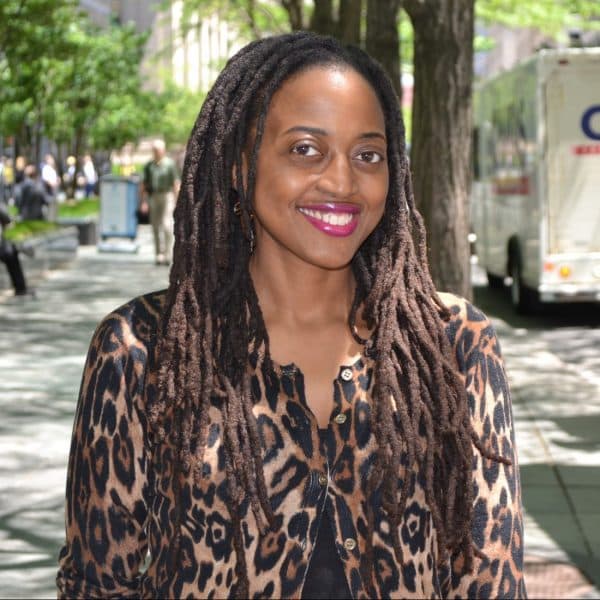Advertisement
Artist Nick Cave’s Vibrant 'Augment' Inflatables To Come Down
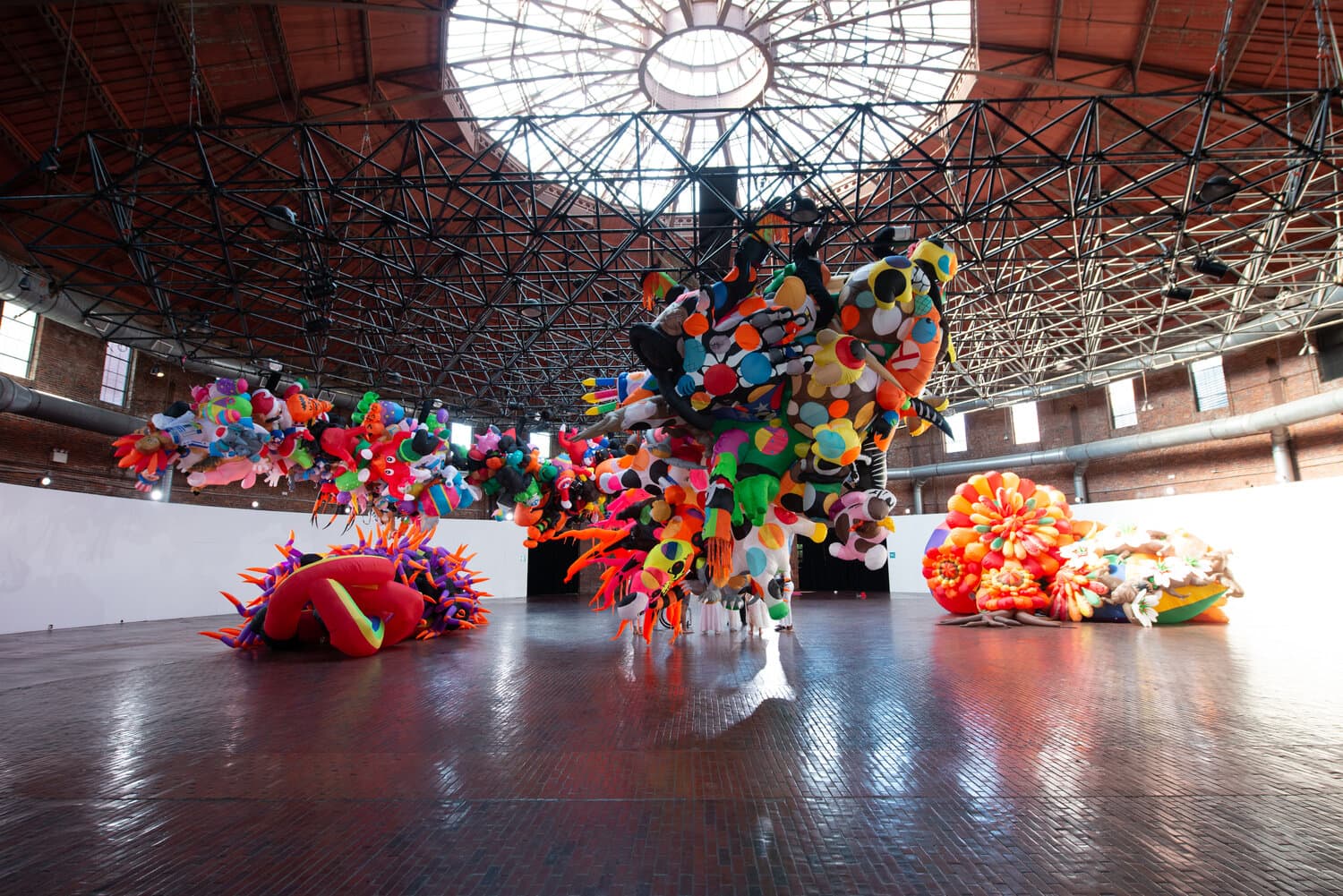
A year before “Black Joy Day” was declared in Boston, prolific Black artist Nick Cave led a “Joy Parade” from the South End to Upham’s Corner in Dorchester. Aspiring to bridge the two communities, hundreds of local artists, costumed street performers and members of the public flooded the streets with exuberance. The event was part of a larger effort spearheaded by nonprofit Now + There in collaboration with Design Studio for Social Intervention (ds4si) among others to engage the public around Cave’s multipart work “Augment,” anchored in togetherness, assemblage and finding joy in sadness. Full of bright billowing inflatable spiders, birthday cakes, horns and more, the piece — first displayed at the Boston Center for the Arts’ Cyclorama and now at Upham’s Corner — feels both joyful and dark. Soon though, on Oct. 19, Cave’s celebrated larger-than-life inflatables portion of “Augment” will come down.
But what does it mean for a neighborhood when art is removed or uninstalled? Lori Lobenstine, program lead at ds4si says, “I think there's a sense of loss.” But the process around the removal matters too. That’s why Lobenstine and her team along with Now + There have been trying to get the word out. She was relieved to hear that the second part of “Augment,” the bold building wrap at 555 Columbia Rd. in which Cave incorporated the art of local residents, “is staying up as long as it looks good,” she says.
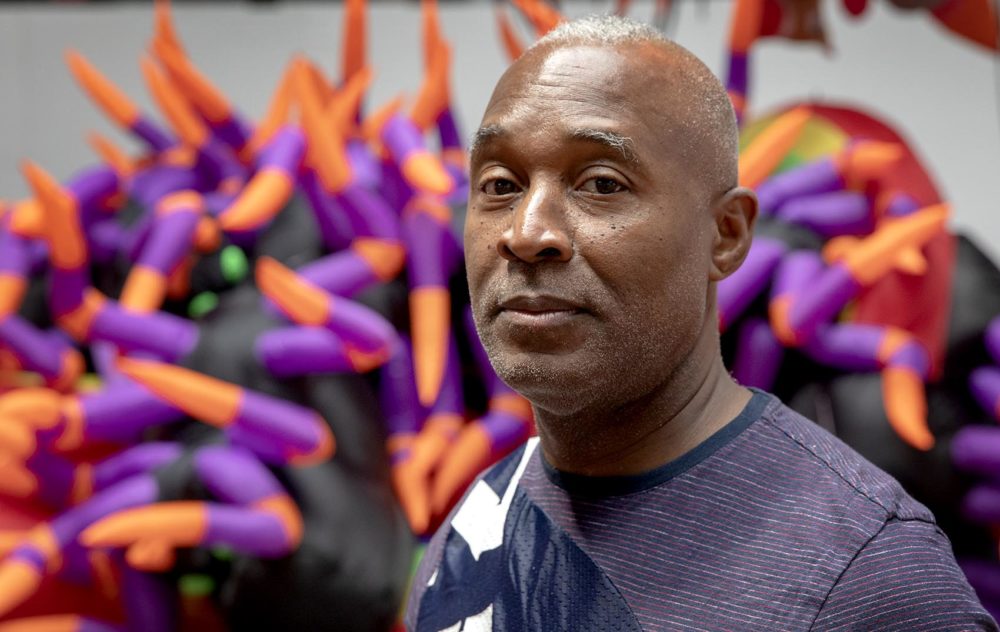
Cave is less concerned about whether or not a piece has to come down, but rather what will replace it. “How do we continue making art as social practice, to find ways to remain relevant?” he asks. It’s a good question and one that organizations like ds4si consistently contend with. Often, ds4si’s work “is temporary and it's meant to sort of instigate, right? Or pose the question and invite people to step in and answer,” Lobenstine says.
For many, last year’s “Joy Parade,” which Cave described as “spectacular,” feels like it occurred long ago. So much has happened since then. The pandemic, the killing of George Floyd, Ahmaud Arbery, Breonna Taylor and others, and protestors demanding change are just a few of the things that have created turbulence. During this time of uncertainty, Cave finds joy “wrapped in purpose.” Civic responsibility is important to him and it brings him joy when he can “see with my own eyes, the impact of a project and how it’s working and serving.”
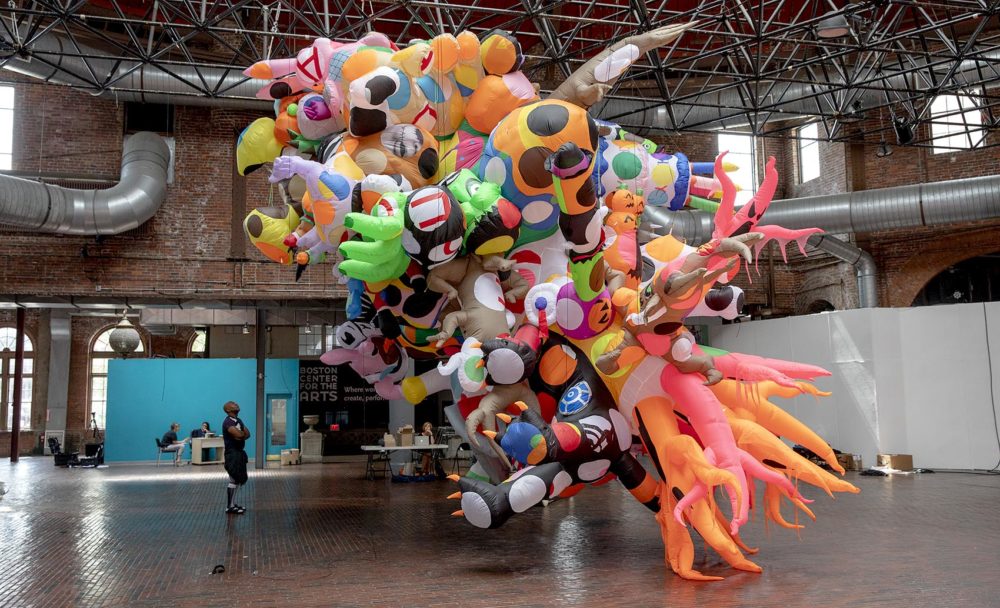
Floyd’s death had quite the impact on Cave, and the nation. “George Floyd happened at a very critical time because…the outcry has been going on for decades and COVID-19 has put us all in a space, a moment where we didn't have any other distractions, but for us to see it for what it was,” Cave shares. That’s why, he says, “the protests looked like they did, that's why it went global because we weren't distracted by sports, we weren't distracted by hanging out with friends. We weren't distracted by going out to dinner. We all were in isolation, and we all saw it together.”
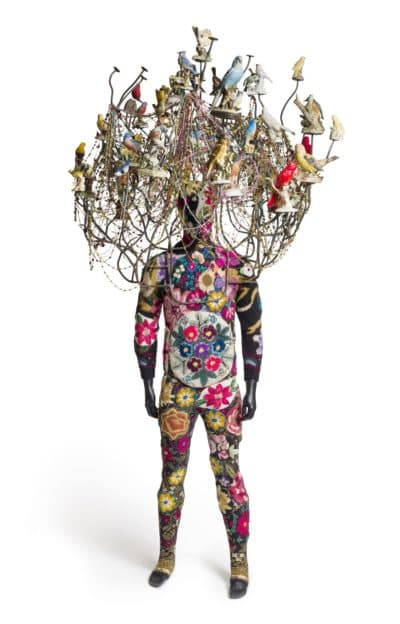
The award-winning Cave is best known for his “Soundsuits,” which are wildly beautiful body sculptures that obscure the face and identity. His first suit was in response to the Rodney King beating of 1992 and since then, the works have continued to evolve. The suits seem futuristic and yet mystically ancient at the same time. Though Cave’s been a practicing artist for more than three decades, “this content, this way of trying to engage in a broader conversation around race, and the injustice around police brutality, continues to be the work that I have to do in front of me,” he says. “But I would like to consider or think about other ways in which I could inform the world. And, it's not that I'm not doing it because also built in my practice is joy and reflection and optimism and hope and dreaming. So, in spite of all the obstacles and the systemic racism, I'm still finding ways to move myself, my practice, forward in a big way.”
His practice is evolving. In May, when Floyd died, Cave was visiting his mother in Missouri. He left his mom when he heard the news to go to his studio and work. He started to think about his live/workspace “facility” — with its large storefront windows — in Chicago and why he had such a space. He and his partner, Bob Faust, embarked on a campaign called “Amends” where they wrote letters to their supporters and asked them to come and write an amend on the window. Later, they hung a clothesline in the yard of a nearby school where community members could share their amends. Since then, Cave has given those amends to a spoken word artist for a later performance.
Advertisement
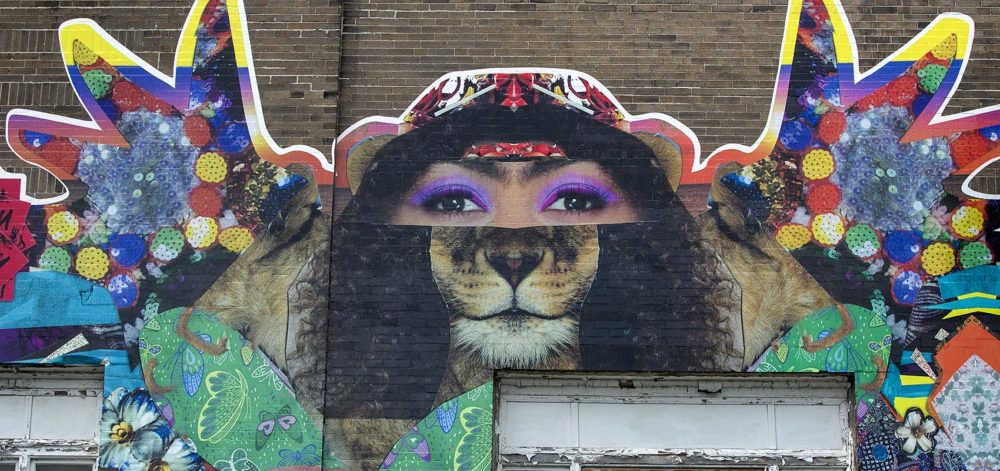
Cave’s also been working on “Soundsuit 2.0” for an exhibition in 2021. For the new suits, Cave was ready to go “next level,” he says. But when Floyd was killed, “everything that I was going to do in terms of color, brilliancy, the just extreme lavishness…it's [now] all shrined in blackness. All [the] color is now shrined with this coating, of this black veil of sorts,” he explains. But there are moments, he says, “where you see peering from underneath, the extraordinary patterns of color, light, brilliancy wanting to find its way through.”
Like the color buried in Cave’s “Soundsuits,” perhaps that’s what we’re all aiming to do during this moment of reconciliation: try our best to shine brightly through the darkness.
Nick Cave’s inflatable sculpture “Augment” on display in Upham’s Corner comes down Oct. 19.
